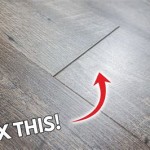Labour Cost for Installing Laminate Flooring
Determining the labour cost for installing laminate flooring is a multifaceted process influenced by numerous factors. Homeowners considering this popular flooring option need a clear understanding of these variables to accurately budget for their project. The following explores the primary aspects contributing to labour costs, providing a comprehensive overview of what to expect when hiring a professional for laminate flooring installation.
Laminate flooring has gained significant traction as a cost-effective and visually appealing alternative to hardwood. Its durability, ease of maintenance, and diverse design options make it a desirable choice for various spaces, from living rooms and bedrooms to kitchens and basements. While the material cost of laminate flooring is generally lower than hardwood, properly accounting for the labour component is essential for a realistic project estimate.
Area Size and Room Complexity
The most significant factor dictating the labour cost is the total area to be covered with laminate flooring. Installation prices are typically quoted per square foot. Logically, a larger area will require more time and effort, translating to a higher overall labour charge. Contractors often offer tiered pricing, with the per-square-foot cost decreasing slightly for larger projects. This reflects the efficiencies gained when working on a more substantial, uninterrupted space.
The complexity of the room layout also plays a critical role. Rooms with numerous corners, doorways, closets, or built-in features require more cutting and fitting of the laminate planks, extending the installation time. Intricate patterns or designs that demand precise alignment further increase the labour cost. Conversely, simple, rectangular rooms with minimal obstructions will generally have lower installation fees.
Subflooring preparation is another aspect linked to room complexity. Uneven or damaged subflooring necessitates additional work to ensure a smooth and level surface for the laminate. This may involve patching, leveling compounds, or even subfloor replacement, all of which add to the labour expense.
For example, installing laminate in a straightforward 200-square-foot bedroom might cost less per square foot than installing the same flooring in a 150-square-foot kitchen with several appliances and cabinet bases to work around.
Subfloor Preparation: A Critical Cost Driver
The condition of the subfloor is paramount to a successful laminate flooring installation. Laminate flooring requires a flat, level, and dry subfloor to prevent issues like buckling, squeaking, and premature wear. If the existing subfloor is not adequately prepared, the installer will need to undertake remedial work, which directly impacts the labour cost.
Common subfloor problems include unevenness, cracks, moisture damage, and loose or missing sections. Addressing these issues may involve several steps: leveling the subfloor with self-leveling compound, filling cracks and holes with patching material, removing and replacing damaged sections of plywood or OSB, and ensuring proper moisture control.
Moisture testing is a crucial step in subfloor preparation. Excess moisture can lead to warping and mold growth under the laminate flooring. If high moisture levels are detected, the installer may need to apply a moisture barrier or take other measures to mitigate the problem, adding to the overall labour cost.
The type of subfloor material also influences the preparation requirements. Concrete subfloors may require more extensive grinding and leveling compared to wood subfloors. Furthermore, existing flooring, such as linoleum or tile, may need to be removed before installing the laminate, adding another layer of preparation work.
Neglecting proper subfloor preparation can lead to significant problems down the line, potentially requiring costly repairs or even complete replacement of the laminate flooring. Therefore, it is crucial to factor in the potential cost of subfloor preparation when budgeting for the project.
Professional installers can assess the subfloor condition and provide a detailed estimate of the necessary preparation work. This typically involves a visual inspection, moisture testing, and potentially using a level or straight edge to identify uneven areas. The more extensive the subfloor preparation, the higher the labour cost will be.
Installation Method and Additional Services
The standard method for installing laminate flooring involves a click-lock system, where the planks simply snap together without the need for glue or nails. While this method is generally straightforward, the installer’s experience and skill level can still affect the overall labour cost. Experienced installers can work more efficiently and minimize waste, potentially reducing the overall time required.
Some laminate flooring products may require specific installation techniques or tools, which could influence the labour cost. For example, certain types of laminate may require a specialized underlayment or a particular type of tapping block to ensure a secure fit. The installer’s familiarity with these specific requirements can impact the efficiency and cost of the installation.
Beyond the basic installation, homeowners may require additional services, such as removing existing flooring, installing baseboards or quarter-round molding, trimming doors, and disposing of waste materials. These services typically incur additional charges, which should be clearly outlined in the installer's estimate.
Removing existing flooring can be a time-consuming and labor-intensive task, especially if the flooring is glued down or difficult to remove. The disposal of the old flooring may also involve additional fees, depending on local regulations and landfill charges.
Baseboards and quarter-round molding are typically installed after the laminate flooring to cover the expansion gap around the perimeter of the room. The cost of installing these moldings will depend on the linear footage required and the complexity of the trim design. Trimming doors may be necessary to ensure they clear the new flooring, which can involve additional labor charges.
The complexity of the project can also increase labor costs. Installing laminate on stairs, for example, requires specialized skills and techniques, and therefore commands a higher price than installing it on a flat surface. Custom patterns or intricate designs also add to the complexity and cost of the installation.
Homeowners should obtain detailed written estimates from multiple installers, clearly specifying all the services included and the associated costs. This allows for a fair comparison and helps avoid any unexpected charges later on. The estimate should include the cost of subfloor preparation, installation, removal of existing flooring (if applicable), installation of baseboards or quarter-round, and waste disposal.
Furthermore, it is prudent to inquire about the installer’s experience and qualifications. A reputable installer should be licensed and insured, and should be able to provide references from previous clients. Choosing an experienced and skilled installer can ensure a high-quality installation and minimize the risk of problems down the line.
The location of the property can also influence labour costs. Installers in metropolitan areas typically charge higher rates than those in rural areas, reflecting the higher cost of living and operating expenses. Furthermore, the availability of installers in a particular area can affect pricing, with higher demand potentially driving up labour costs.
The season of the year can also play a role in labour costs. During peak seasons, such as spring and summer, installers may be in high demand, which can lead to higher prices. Conversely, during slower seasons, such as winter, installers may be more willing to offer discounts to secure work.
In summary, the labour cost for installing laminate flooring is a dynamic figure shaped by a combination of factors. Understanding these factors empowers homeowners to make informed decisions, budget effectively, and ultimately achieve a successful flooring installation.
Obtaining multiple quotes ensures a competitive price, and verifying the installer's credentials provides peace of mind regarding the quality of the workmanship. Thorough preparation and clear communication with the installer are key to a smooth and cost-effective laminate flooring project.

Fixr Com 2024 Laminate Flooring Installation Cost

What S The Cost To Install Laminate Flooring Floorings

Cost To Install Laminate Flooring A Complete Guide 2024 Forbes Home

How Much Does Flooring Installation Cost 2024 Guide

How Much Does It Cost To Install Laminate Flooring Homeserve Usa

2024 Laminate Flooring Installation Cost Guide Angi

Laminate Flooring Installation Cost Estimator Estimate Florida Consulting

Laminate Flooring Installation Cost Estimator Estimate Florida Consulting

Cost To Install Laminate Flooring Home Pros

Laminate Flooring Installation Cost Per Sqm Karma
Related Posts








